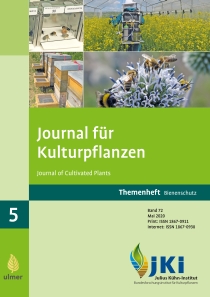Looking for residues of pesticides in bees, plants and bee products
DOI:
https://doi.org/10.5073/JfK.2020.05.04Keywords:
Residue analysis, multi-method, pesticides, LC-MS/MS, GC-MS, bees, plantsAbstract
The chemical-analytical determination of pollutant residues of various origins is essential for the determination of exposure in the context of the investigation of bee poisoning and of studies to assess the risk to bees. The established and extensively validated multi-method is very well suited for the determination of residues in bee and plant samples as well as for various bee products (e.g. pollen/bee bread, royal jelly or wax). The validation experiments were carried out with the current spectrum of active substances of the investigation center for bee poisoning incidents and various concentration levels. The concentrations were chosen so that as far as possible all active substances of the investigation program could be determined with LC-MS/MS and GC-MS. Validations with the concentrations 1, 10 and 50 μg/kg were carried out with the matrices “bees” and “rape”. The quantification was carried out with matrix standards in order to reduce the matrix influences caused by sample ingredients. For 240 active substances (especially insecticides, fungicides), included in the screening program in 2011, the recovery rates with the bee matrix at the concentration level of 10 μg/kg were mostly between 70% and 110%, with relative standard deviations below 15%.
Downloads
Published
Issue
Section
License
The content of the journal is licensed under the Creative Commons Attribution 4.0 License. Any user is free to share and adapt (remix, transform, build upon) the content as long as the original publication is attributed (authors, title, year, journal, issue, pages).
The copyright of the published work remains with the authors. The authors grant the Journal of Cultivated Plants, the Julius Kühn-Institut and the OpenAgrar repository the non-exclusive right to distribute and exploit the work.







